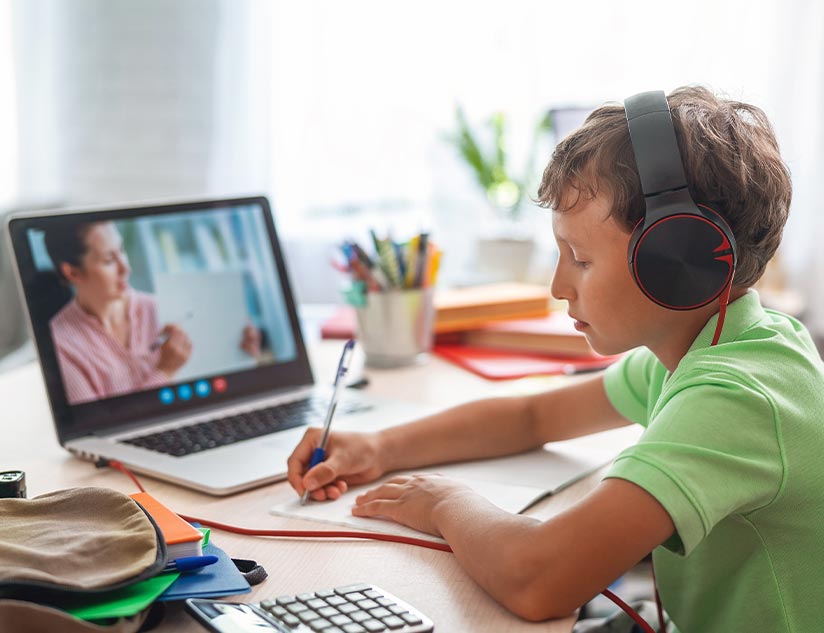How Digital Content Can Make Classrooms Culturally Responsive
January 22nd, 2020
As international migrations remain a constant aspect of modern society, classrooms around the world are becoming increasingly multicultural. Students of diverse races and ethnicities, speaking different languages and following different religions are all studying together in the K-12 classrooms. Expecting students to leave all that behind when they enter a classroom isn’t just unrealistic, it is unfair. What we need is a culturally responsive curriculum. A functional multi-cultural society can only be built when basic educational practices make the most of the cultural capital that each student brings to the learning process.
Education Technology now provides the tools needed for culturally responsive teaching. Before we get on to how, let’s understand why.
Culturally Responsive Classrooms: Teaching Students to Navigate Adulthood in a Diverse Society
The concept of culture as defined by Jacqueline Jordan Irvine and Geneva Gay is a combination of a person’s “world views, language and values.” There are both visible and invisible aspects to this – visible like music, arts and linguistics, invisible like feelings, perspectives and assumptions.
Classrooms, where students and teachers appreciate and leverage this diversity, are called culturally responsive classrooms. They offer enriching learning experiences. When schools foster such learning experiences, they help create sensitive individuals, those who can form meaningful personal relationships and foster mutual respect, irrespective of age, gender, religion, sexual orientation or socio-economic status.
What can Culturally Responsive Teaching Achieve?
“Teachers should develop a learning environment that is relevant to and reflective of their students’ social, cultural and linguistic experiences. They act as guides, mediators, consultants, instructors and advocates for the students, helping to effectively connect their culturally and community-based knowledge to the classroom learning experiences.”
~ Bruce E. Larson, author of Instructional Strategies for Middle and High School Social Studies: Methods, Assessment, and Classroom Management
This powerful quote by Larson sums up the need for Culturally Responsive Teaching (CRT) and for teachers to play a significant role in the process.
Students develop and achieve more when classrooms adopt teaching methods that reflect their communities. Given the rising diversity in classrooms today, these practices are important, not only to foster tolerance but also to support students from minority communities and lower income families. For instance, researchers have documented lower educational outcomes like graduation rates and student achievement for immigrant students, across major countries worldwide.
Then, there is the concept that “diversity makes us smarter.” Studies show that students’ exposure to friends who belong to a different culture and religion brings challenges that can lead to improved cognitive skills like critical thinking and problem solving.
For instance, two researchers at the University of Kansas have published a study that proves that teaching mathematics to school students can be more effective when teachers keep the students’ socio-cultural backgrounds in mind.
CRT helps students understand the concept of social justice better. They are better able to understand and evaluate things like global poverty, societal oppression and even become agents of change.
So, how can teachers adopt CRT methods?
Teaching Strategies to Build a Culturally Responsive Classroom
Take a look at the 7 principles of Culturally Responsive Teaching instructed by Gary R. Howard.
He emphasizes how students are highly perceptive by nature. Teacher biases and misconceptions can easily creep into their interactions and students can then sense the slightest hint of anger, disgust and discrimination. So, if you want your students to become culturally responsive, you will first need to be welcoming and culturally tolerant.
According to Geneva Gay, author of Culturally Responsive Teaching: Theory, Research, and Practice, CRT rests on six main dimensions:
1. Socially and Academically Empowering: Teachers need to raise the bar for students, committing to every student’s success, irrespective of cultural background.
2. Multidimensional: Teachers need to engage with each student’s cultural background, experiences, contributions and perspectives.
3. Validation: Teachers need to adopt diverse instructional strategies to bridge the gap between school and home.
4. Socially, Economically and Politically Comprehensive: Teachers need to help inculcate all necessary traits to create future-ready students.
5. Transformative of Schools and Societies: Using students’ strengths to build curriculum and assessment styles.
6. Liberating from Oppressive Educational Policies: They should be able to stand up against outdated concepts of scholarly truth, typically followed in schools.
Educational experts have found some ways of achieving all of these:
- Be intentional about fostering a safe learning environment
- Be proactive in learning more about your students’ backgrounds and difficulties.
- Be able to provide justifications as to why they are being evaluated in the manner they are currently.
- Be ready to answer difficult questions, honestly.
- Be ready for feedback. Ask students if they feel comfortable with your strategies and behavior.
- Create a “student spotlight.” Focus on one student at a time, and ask them to share their family stories with the rest of the class. Encourage them to take pride in their culture.
- Do not hesitate to use technology tools to guide your strategies.
Where Does Technology Come in?
Advancements in EdTech has created the potential to make the curriculum relevant for all students. When a lesson is relevant, students are more interested in learning. Interactive tools promote analytical capabilities, their brains ignite, and they are able to close the achievement gaps quickly. Let’s face it, technology is the best way to culturally empower a generation of K-12 school goers who rely on digital content for every informational need. Here are some ways EdTech can help.
1. Making Learning Contextual
Lessons from the curriculum can be tied to students’ social communities. If you are discussing World War II, a good idea is to discuss what lessons the world can learn from the tragic event. How did specific communities suffer? Use platforms like YouTube Live or YouNow to let families participate in special events.
2. Celebrating Diversity
Platforms like MagicBox allow students to set their language preferences and students can navigate the entire interface in their native language. Education publishers should also consider publishing content in multiple languages not just for different geography but for diverse minorities in the same community.
Try using Google Translate, iTranslate or Reverso to communicate with students and families, who don’t speak English. You can also build their vocabulary with such tools. Expose them to various educational videos, images and animations to enable them to understand and remember things better.
3. Promoting the Student Voice
Through tools like Google Hangouts, ePals and Skype, let students collaborate with teachers and other students from across the world. Schools can establish partnerships with foreign institutions for specific topics. In fact, a good learning experience platform can offer multiple opportunities for collaborative learning.
4. Offering Self-Learning Modules
Things are easier when you can integrate content on a single platform. Promote access to interactive content, where students have control over what they learn. This creates learners’ agency. Students feel empowered and appreciate the fact that they are allowed to embrace their culture and history.
There are many educational benefits of a multicultural classroom. While educators might have been trying to implement CRT for some time now, it is only with the advent of feature-rich learning platforms that it has become much more possible. Creation of a just and tolerant society has to start with the children. The good news is that Ed Tech provides us the means to create culturally responsive classrooms.














